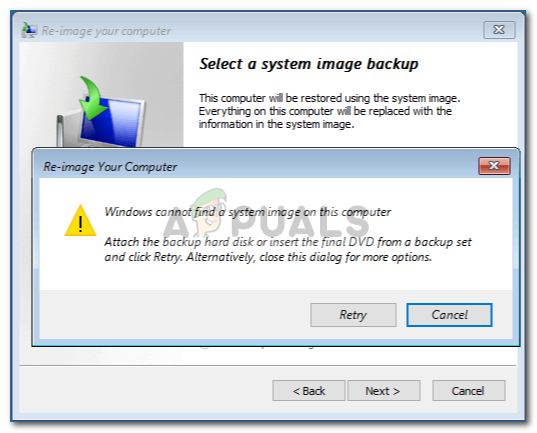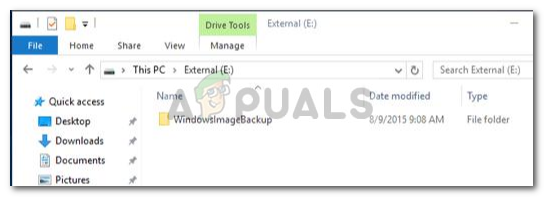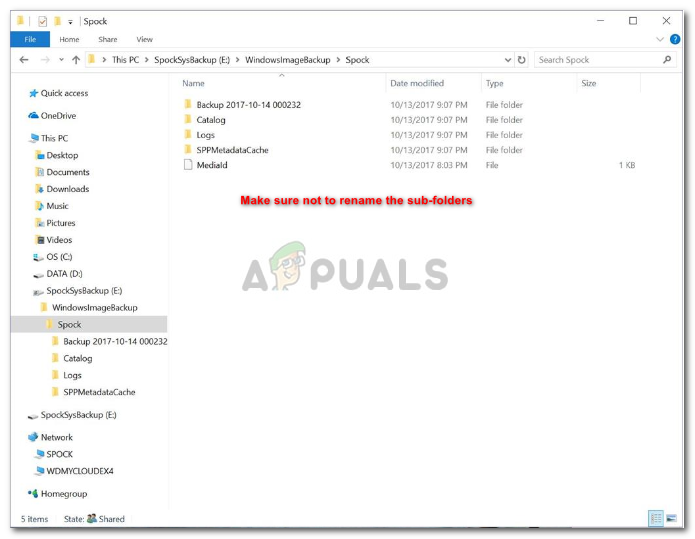Fix: Windows Cannot Find a System Image on This Computer
Users usually encounter the ‘Windows Cannot Find a System Image on This Computer’ error while they’re trying to restore a system image. A system image is basically backup of your whole data on the system. It can be the backup data of one of the volumes of your hard disk or the whole harddisk itself. This is quite useful in some cases i.e if you aren’t able to get back into your system for some reason or your system has been corrupted then you can easily utilize this feature and get going safe and sound.
However, when you make a system image of, for example, a drive and then, later on, use that backup to restore the data, you might get the said error. This is not a major issue and occurs due to a number of reasons that can be easily fixed, therefore, nothing to worry about as your data will remain safe.

What causes the Windows Cannot Find a System Image on This Computer Error on Windows 10?
Like we mentioned above, this error arises due to a specific number of reasons that are —
- Changing the name of the WindowsImageBackup folder. One of the reasons due to which the error pops up is if you rename the WindowsImageBackup folder. This folder is responsible for storing all of your data.
- Renaming the Sub-folders. Similar to the cause mentioned above, the error can also pop up if you change the name of the sub-folders of the WindowsImageBackup folder.
Now that we’ve mentioned the causes, let us have a look at the solutions:
Solution 1: Put WindowsImageBackup Folder in the Root Directory
If the WindowsImageBackup folder isn’t in the root directory of the drive, Windows will have trouble finding the folder and hence you’ll be prompted with the error. Root directory means the folder shouldn’t be stored within a folder but rather in the main directory, for example:

F:\WindowsImageBackup.
In the above example, the folder is in the root directory and isn’t subjected as a sub-folder.
Solution 2: Don’t Add Sub-folders in the WindowsImageBackup Folder
Another reason due to which the error emerges could be the creation of sub-folders in the WindowsImageBackup folder. The folder should be left as it is and is not to be trifled with. In case you’ve added sub-folders in the WindowsImageBackup folder, make sure to remove them.
Solution 3: One System Image per USB Drive
If you’ve stored multiple images inside a single USB drive, it could confuse Windows and you’ll be shown the error. Therefore, make sure you store one system image per USB drive. Storing system images of different volumes of your hard disk in a single USB will always prevent you from restoring your data.

Solution 4: Rename System Image Folder
If you’ve changed the name of the system image folder after storing it on a USB stick or whatever, that could be the cause of the error as well. While restoring your data, Windows searches for the WindowsImageBackup folder which is the default name of the system image folder. Hence, make sure the name of the folder is WindowsImageBackup.
Solution 5: WindowsImageBackup Sub-Folders
The system image folder, by default, contains a few sub-folders which are required while restoring your data. If you’ve renamed the sub-folders of WindowsImageBackup folder, restore them to their original name.

Double-check the above-mentioned instructions in order to restore your data safely.





